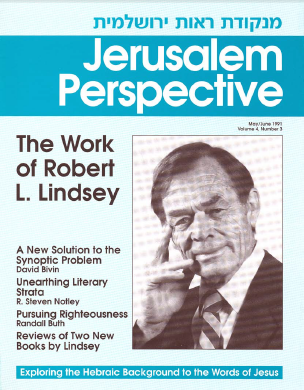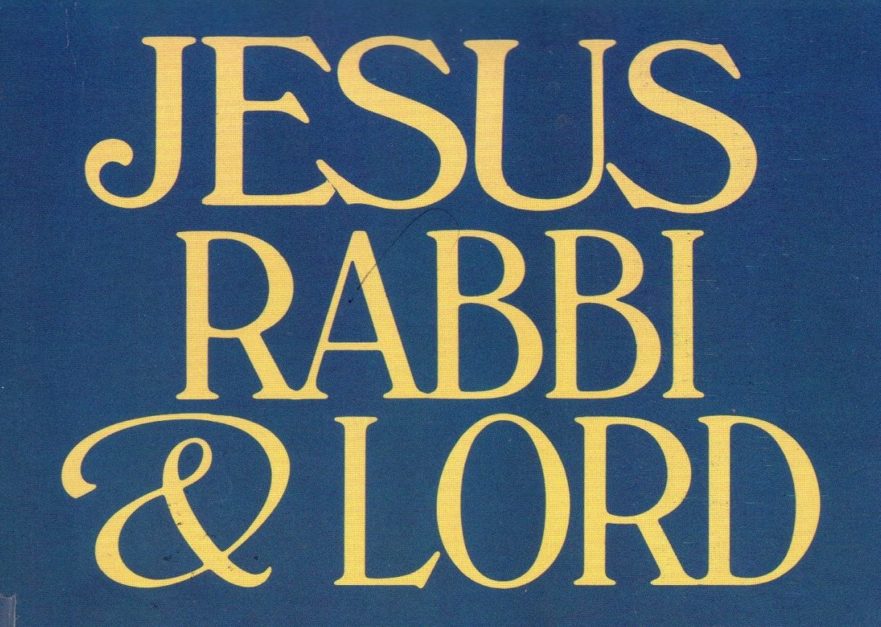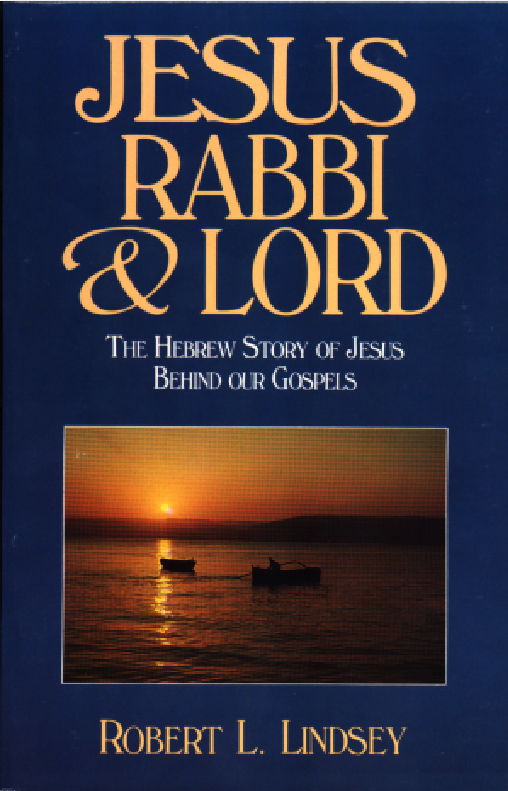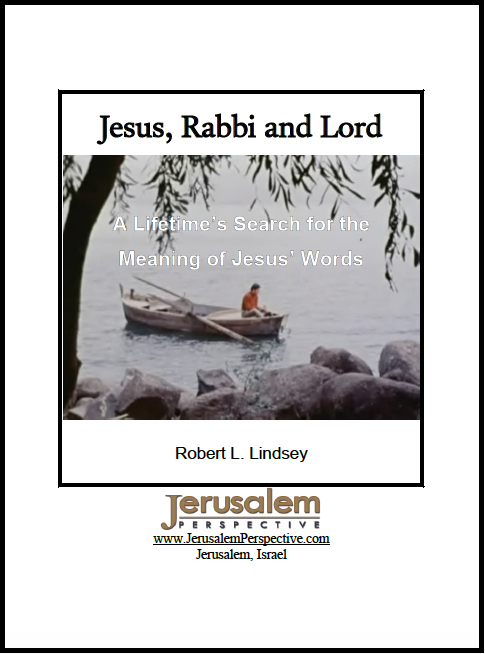
This is an unusual book, at once intriguing, illuminating, provocative, even frustrating. It is written in a popular style with no footnotes or lengthy academic discussions, and at times the book seems directed to anyone interested in the life of Jesus. However there is a sophistication in the analysis that requires an extensive technical background in order to evaluate or appreciate the suggestions.
The picture of Jesus should be attractive to an evangelical audience, though perhaps a little unnerving. Some readers may find it difficult to accept the literary analyses employed.
Lindsey’s Personal Pilgrimage
The book begins with personal glimpses into Lindsey’s “pilgrimage” to the land of Israel and his life-long study of the Synoptic Gospels. Lindsey’s research led him to a friendship with Professor David Flusser of the Hebrew University.
The two of them, meeting regularly for many years, came to conclusions that chart a different path from most New Testament scholarship. They believe that there is a written Hebrew Gospel “buried” beneath the written Greek sources of the Synoptic Gospels. Their methodology is to clear away Grecisms and interpret the material within a first-century cultural milieu.
Innovative Approach to the Synoptic Gospels
Two distinct innovations have arisen, in addition to a Lukan priority model of synoptic relationships. One innovation is the suggestion that some of the isolated teachings, parables and stories still extant in the canonical Gospels were once connected in a pre-synoptic document. Lindsey suggests that there was a literary pattern of “incident-teaching-parable-parable.” For example, he contends that the discourse on “worry” in Matthew 6:25-34 followed the incident with Mary and Martha in Luke 10:38-42, and was followed by the parables in Luke 12:16-21, “The Rich Fool,” and Luke 16:19-31, “The Rich Man and Lazarus.” Lindsey mentions finding some twenty literary reconstructions of this sort.[1]
The second major methodological innovation is the claim that many of the sayings of Jesus scattered throughout the Gospels come from the period of forty days after the resurrection. A classic example for Lindsey is Luke 21:12-17 and Matthew 10:16-18. According to him, Luke has put these post-resurrection warnings of persecution in the midst of two different prophecies, while Matthew has placed them in the “Sending Out of the Twelve.”
A Test Case
An example of the methodology in Lindsey’s book, its potential usefulness and also its potential frustration for scholars, can be found in sections dealing with Matthew 5:10-12.[2] Lindsey explains “persecuted for the sake of righteousness” as having originally been “those with a zeal for righteousness.” This is an interesting interpretation, but most of the intervening steps and evidence for the analysis are unstated.[3]
Conclusion
There are many unique proposals in the book which deserve serious consideration. It would be good, of course, if this material could also be written up for an academic audience. The scholarly community might enjoy hearing about “rabbinic-resurrection criticism” [my term] and the resultant view of Jesus as the divine Messiah-Rabbi.
Note: Jesus Rabbi & Lord, out of print for years, has been reissued as the eBook, Jesus, Rabbi and Lord: A Lifetime’s Search for the Meaning of Jesus’ Words, which can be purchased in JP’s online bookstore.


- [1] Jesus, Rabbi and Lord: A Lifetime’s Search for the Meaning of Jesus’ Words, 93. ↩
- [2] Jesus, Rabbi and Lord: A Lifetime’s Search for the Meaning of Jesus’ Words, 123-124, 195. ↩
- [3] For an elaboration of the steps and evidence, see my article “Pursuing Righteousness.” ↩

































































































